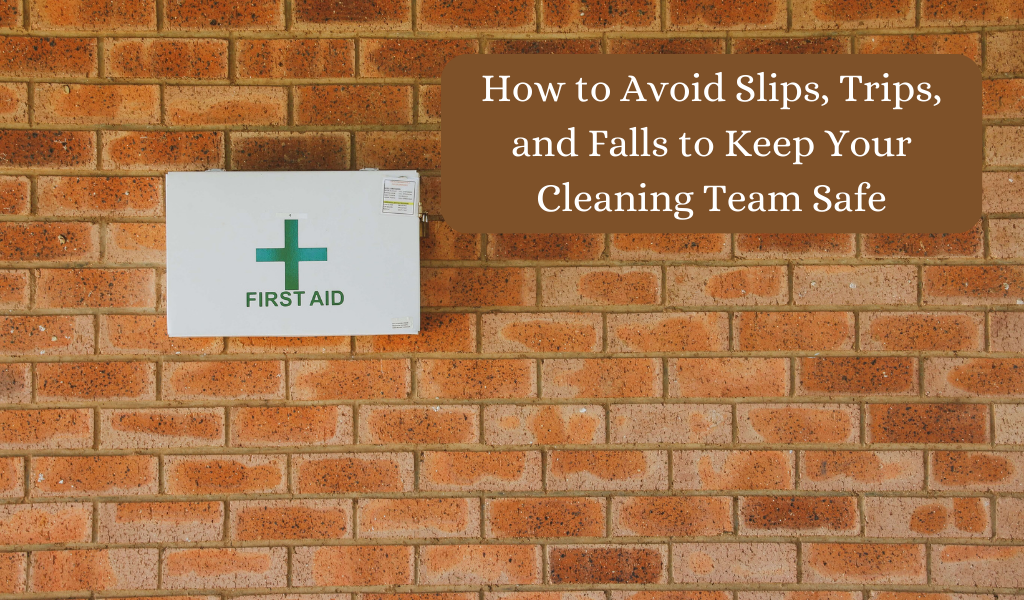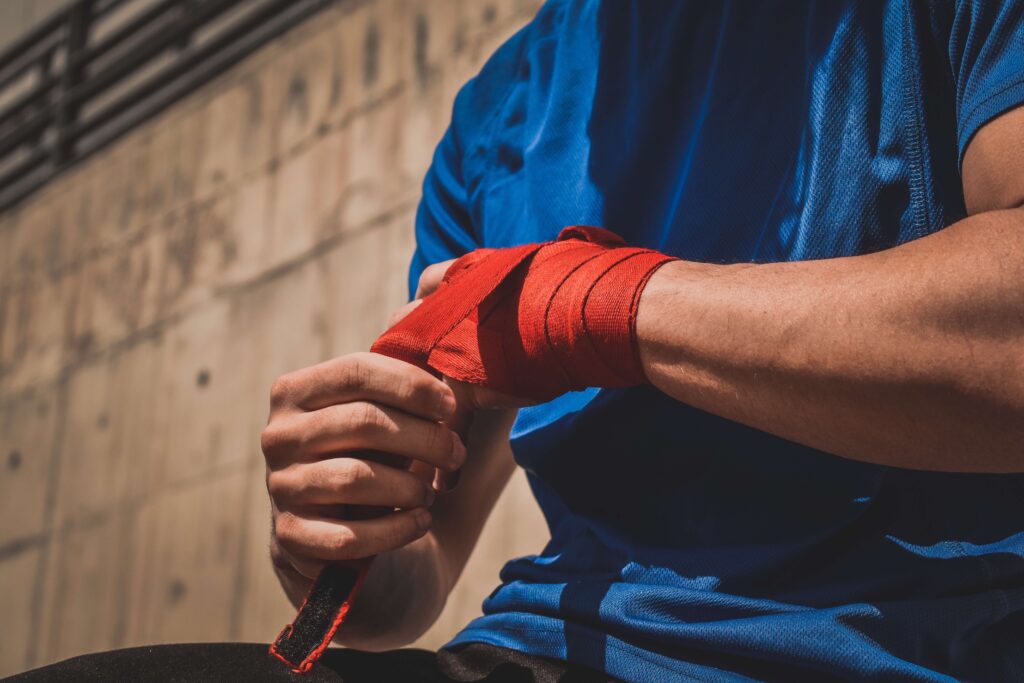They’re among the most frequent causes of injuries in the janitorial field. Now find out how to avoid slips, trips, and falls so your team stays safe.
It’s not as easy as you might think to avoid slips, trips, and falls at work. An unexpectedly slippery surface or a fallen mop handle across a walkway can be enough to trip someone enough that they fall and get injured.
In fact, slips, trips, and falls are the second-highest cause of nonfatal injuries in the commercial cleaning industry, according to the Bureau of Labor Statistics. The National Safety Council lists slips, trips, and falls as the third leading cause of nonfatal injuries across industries. Sadly, they are also the second-leading cause of injuries resulting in death.
As unfortunate as these statistics are, a strategic focus on safety, health, and wellness can help you, your team, and your customers avoid slips, trips, and falls in the workplace. The hazards that lead to these events might be difficult to eliminate, but that doesn’t mean they’re inevitable.
Don’t let accidents or injuries hobble your cleaning team. Learn more today with a discovery call and find out how to make your cleaning operation more efficient, cost effective, and safer for everyone!
The real numbers behind slip and fall injuries
Over 230,000 people are injured yearly from slips, trips, and falls at work. Janitors and cleaners account for approximately 4,700 of these injuries. To be clear, these are injuries that result in days away from work.
From a strictly “numbers” point of view, that means you’re working short-handed for at least a day or two. Broken bones or severe sprains could mean your employee is looking at several weeks out of work. During that time, not only is your team down a person, but they’re probably also working extra to pick up the slack.
While it’s great that you have people who are able to do that, there’s a less-than-ideal side here. Overworked, tired employees are more prone to injuries and mistakes. That can result in less efficient and accurate cleaning results, as well as slower progress as people work long hours. And that doesn’t even count the overtime pay.
15 Ways to avoid slips, trips, and falls in the janitorial work environment
Many of the tips available to help workers avoid slips, trips, and falls are excellent, and you’ll read some of them here. However, the janitorial and building services industry has a lot of unique aspects. For example, while in-house providers may work in a single facility or group of facilities, many janitors move through several facilities during a shift.
No matter where you work, you and your team are still working on wet floors, stepping over cords for vacuums or floor machines, and dealing with similar hazards. So, to avoid slips, trips, and falls does require some diligence. That’s why, along with the more general tips, you’ll find some specific to the janitorial industry.
1. Walkthrough with your team. Especially when you start at a new location, do a safety walkthrough with your team. Point out potential hazards that exist on the job site and correct what you can.
2. Maintain awareness. Simply being aware of your surroundings can do wonders for safety.
3. Turn on lights. Especially for teams that work after hours or early mornings, it’s always helpful to have the lights on so you can see.
4. Limit the extension of power cords. If possible, keep cords away from main pathways, and don’t stretch them to their limits. A little slack in the cord can help prevent someone’s foot from getting caught.
5. Don’t climb to clean. As tempting or convenient as it may sometimes be to use a chair or desk to reach higher surfaces, it’s much safer to use a ladder or step ladder.
6. Open and lock ladders. When you do use a ladder or step ladder, ensure they are in their fully open and locked positions.
7. Ensure ladders are on level surfaces. A tilted or wobbly ladder is an accident waiting to happen.
8. Mix cleaning solutions properly. If you buy concentrates, you’ll need to mix them with water to create your cleaning solutions. A mixture that’s too heavy on the concentrate can leave a slippery residue on floors that results in a hazard for your team and your customers.
9. Communicate about spills within teams. Some spills you can get to right away. Others might require special products or supplies to clean. Unless you can clean up a spill immediately, communication with other team members can help everyone understand the slipping hazard.
10. Improve communication with customers. One of the easiest ways to avoid slips, trips, and falls is to know where there may be a hazard. Tools such as QR codes allow your customers to leave notes for your team regarding the conditions of an area. So if they notice a spill or tripping hazard, they can alert your team.
11. Use slip-resistant footwear. You’ll find plenty of “non-slip” footwear, but for something standardized and lab-tested, look for slip-resistant footwear that meets the ASTM F2913-11 standard, which tests traction on surfaces contaminated with water, ice, oil, grease, and other slippery substances.
12. Ensure easy access to “Wet Floor” signage. Make sure Wet Floor signs are easily available for expected hazards, such as mopping, as well as unexpected hazards like spills.
13. Store inventory properly. Keep heavier items on lower shelves and lighter items toward the top. This helps prevent people from losing balance as they try to lift heavier items from overhead.
14. Store equipment properly. Properly stored equipment usually coincides with properly cleaned and maintained equipment, which is good for your business. Additionally, though, proper storage means hoses, tubes, cords, and other tripping hazards are also removed.
15. Train your team. There are numerous OSHA safety training courses that don’t require a significant investment of either time or money.
While you may not be able to entirely eliminate accidents at work, taking the steps here can do wonders for minimizing the risk and keeping you, your team, and your customers safe.
Improve communications and stay on top of safety protocols. Schedule a free call with Janitorial Manager to learn how mobile-friendly janitorial software can help your team improve safety for everyone.


